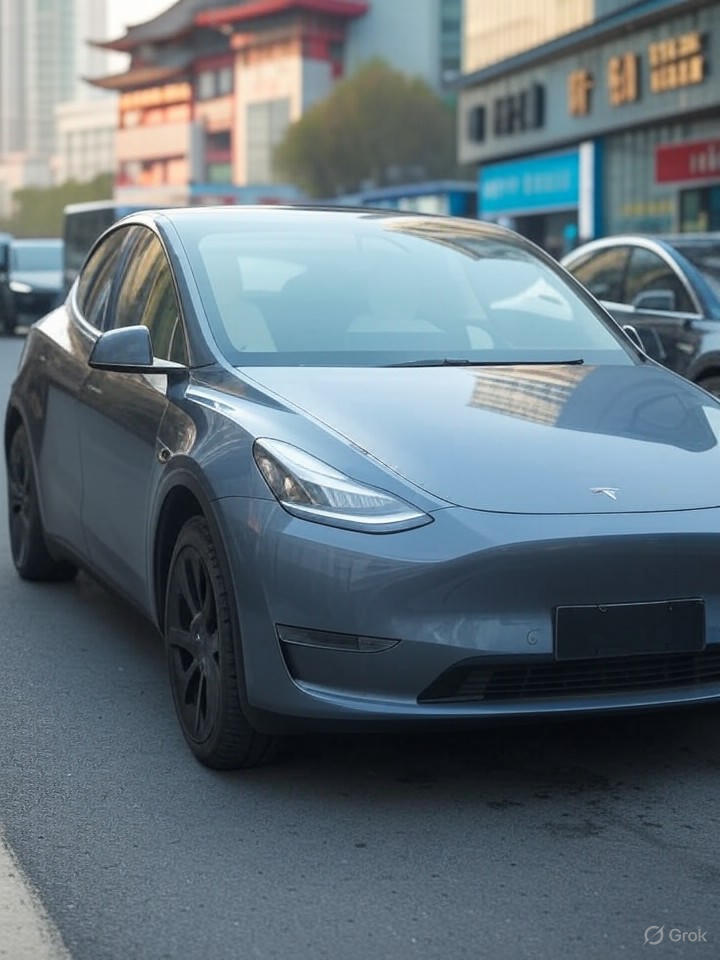Tesla Inc.’s sales of China-made electric vehicles in July 2025 dropped 8.4% from a year earlier, signaling ongoing challenges in the world’s largest auto market amid intensifying competition and economic headwinds. According to data from the China Passenger Car Association, the company delivered 67,886 vehicles, including exports, marking a 5.2% decline from June. This figure encompasses popular models like the Model 3 and Model Y produced at Tesla’s Shanghai Gigafactory, highlighting a persistent slowdown after a brief uptick in June.
Analysts attribute this dip to aggressive pricing strategies by local rivals such as BYD Co., which reported a modest 0.6% year-over-year sales increase to 341,030 new energy vehicles in July, per its own disclosures. Tesla’s performance comes against a backdrop of a broader slowdown in China’s EV sector, where total new energy vehicle sales are projected to grow but at a tempered pace due to weakening consumer demand and subsidy reductions.
Competitive Pressures Mount
In the domestic market, Tesla’s sales fell to around 46,000 units in July, achieving a 2.7% market share, as noted in posts on X from industry observers like Roland Pircher. This represents a 46% increase from the previous quarter’s start but still underscores vulnerabilities. The Model Y remained a top seller, accounting for 79% of Tesla’s China sales, yet it faces stiff competition from BYD’s budget-friendly models and emerging players like Xiaomi, which saw robust growth.
Recent reports from Reuters indicate that Tesla’s sales declines have persisted for months, with May seeing a 15% drop year-over-year. This pattern reflects a brutal price war, where Tesla has slashed prices multiple times to defend its position, but gains have been fleeting. For instance, a surge in insurance registrations in early July, up 145% week-over-week as per The Cool Down, offered temporary relief but didn’t sustain through the month.
Economic and Regulatory Factors
China’s economic recovery has been uneven, with cautious consumer spending impacting big-ticket purchases like EVs. BYD’s minimal growth, despite heavy discounting, signals broader market caution, as highlighted in X posts from analysts like Dan Tsubouchi. Tesla’s export strategy provides some buffer; July figures include shipments to Europe and elsewhere, helping offset domestic weakness.
Looking ahead, forecasts from CnEVPost had anticipated Tesla’s July sales at around 42,300 units domestically, but actual numbers exceeded that, suggesting resilience in certain segments. However, competition from Nio Inc. and Xpeng Inc., which reported order increases, could erode Tesla’s share further. Deutsche Bank estimates pegged Nio at 21,000 units, indicating a fragmented market where innovation in autonomous driving and battery tech will be key differentiators.
Strategic Implications for Tesla
Tesla’s Shanghai plant, a cornerstone of its global production, produced 71,599 vehicles in June, per X updates from Mario Nawfal, but July’s output likely adjusted downward amid softening demand. Elon Musk has emphasized expanding Full Self-Driving capabilities in China to counter rivals, yet regulatory hurdles persist.
The July data, detailed in a Yahoo Finance report, underscores the need for Tesla to innovate beyond price cuts. With China’s EV penetration at 28% in July, as per X insights, the market remains a growth engine, but Tesla must navigate local preferences for affordable, feature-rich vehicles. Analysts from Investing.com warn that prolonged declines could pressure Tesla’s margins, prompting potential shifts in supply chain or model refreshes.
Broader Market Trends
Overall, China’s NEV sales for July showed mixed results, with BYD leading at 2.5 million units year-to-date, according to X compilations from Lei Xing. Tesla’s 8.4% drop contrasts with Xiaomi’s gains, illustrating a shift toward diversified offerings. Geely and Xpeng also bucked the monthly dip, per CnEVPost previews.
For industry insiders, this signals a maturing market where scale and localization are paramount. Tesla’s global ambitions hinge on China, but sustaining momentum will require addressing economic sensitivities and rival innovations head-on.




 WebProNews is an iEntry Publication
WebProNews is an iEntry Publication